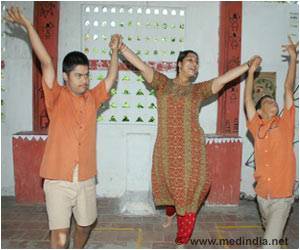The children were participating in a dance therapy activity as part of research team’s program exploring movement-based approaches to mental health treatment in people resettled as refugees.
‘Dance therapy can reduce the symptoms of post-traumatic stress disorder and anxiety in refugee youth.’
On an average, every year about 60,000 children are resettled as refugees in Western nations. Now, the refugee crisis resulting from the US withdrawal from Afghanistan is bringing renewed attention to their needs.
The instinct to move the body in expressive ways is as old as humanity. But movement-based strategies such as dance therapy have only recently been given much attention in mental health treatment circles.
During the Covid-19 pandemic, the incidence of anxiety and depression has doubled in youth. As a result, many people are searching for new ways to cope with and handle emotional turmoil.
Interventions that offer physical activity and creativity components at a time when children and people of all ages are likely to be sedentary and with reduced environmental enrichment can be beneficial during the pandemic and beyond.
Body movement has many benefits including reducing perceived stress, lowering inflammation in the body, and even promoting brain health.
In fact, researchers understand that the majority of our daily communication is nonverbal, and traumatic memories are encoded, or stored, in nonverbal parts of the brain.
Dance and movement therapy sessions place an emphasis on fostering creativity and adaptability in order to help people develop greater cognitive flexibility, self-regulation, and self-direction.
This is especially important because research shows that early-life experiences and how children learn to cope with them can have a lasting impact on their health into adulthood.
This new research shows that dance therapy can build up children’s sense of self-worth, improve their ability to regulate their emotions and reactions, and empower them to overcome obstacles.
Like yoga and meditation, dance therapy also focuses on deep breathing through the diaphragm. This intentional breathing movement physically pushes on and activates the vagus nerve, which is a large nerve that coordinates a number of biological processes in the body.
Based on all these proven benefits of dance therapy, researchers have scaled up these programs and brought them into the virtual classroom for six schools throughout the metro Detroit region during the COVID-19 pandemic.
Source: Medindia



